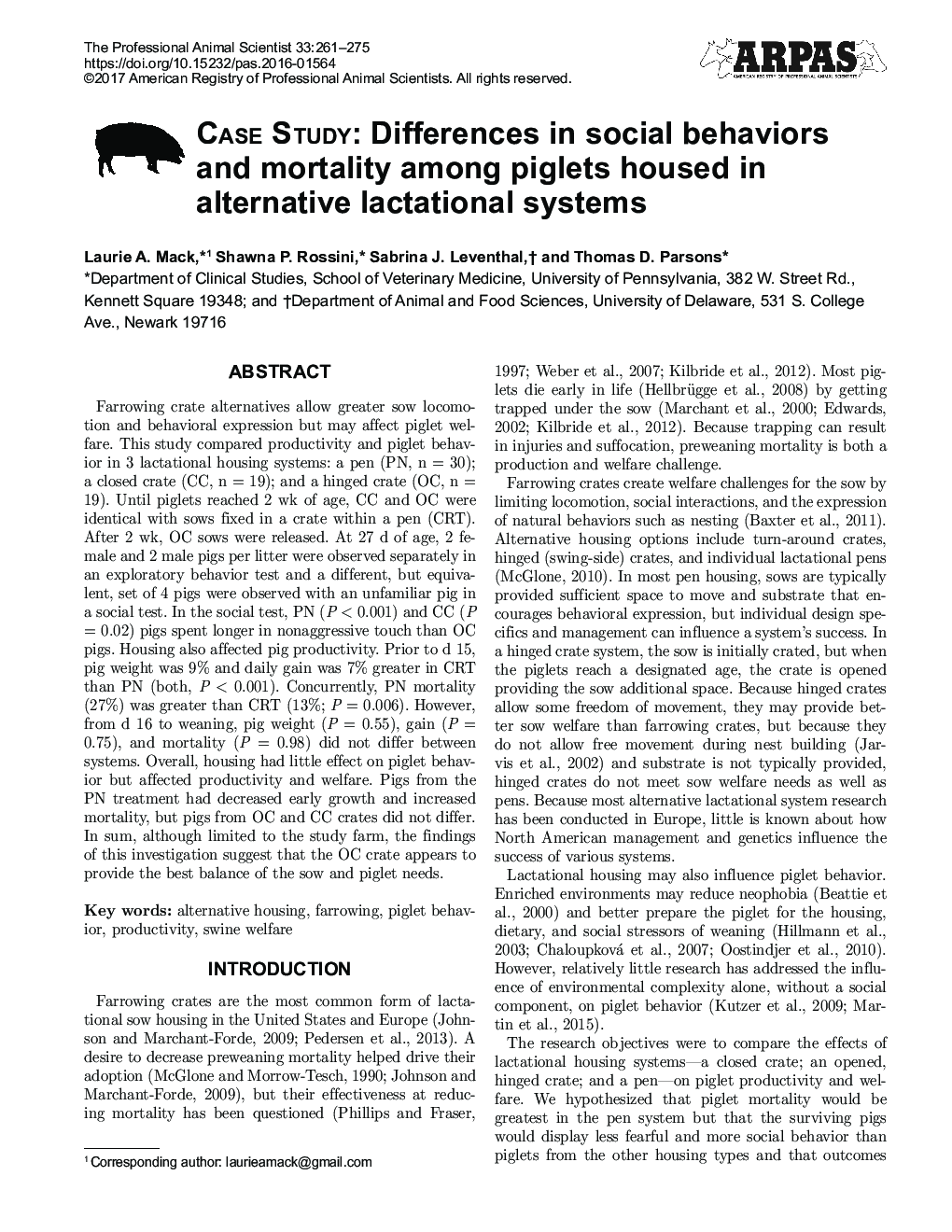| Article ID | Journal | Published Year | Pages | File Type |
|---|---|---|---|---|
| 8503773 | The Professional Animal Scientist | 2017 | 15 Pages |
Abstract
Farrowing crate alternatives allow greater sow locomotion and behavioral expression but may affect piglet welfare. This study compared productivity and piglet behavior in 3 lactational housing systems: a pen (PN, n = 30); a closed crate (CC, n = 19); and a hinged crate (OC, n = 19). Until piglets reached 2 wk of age, CC and OC were identical with sows fixed in a crate within a pen (CRT). After 2 wk, OC sows were released. At 27 d of age, 2 female and 2 male pigs per litter were observed separately in an exploratory behavior test and a different, but equivalent, set of 4 pigs were observed with an unfamiliar pig in a social test. In the social test, PN (P < 0.001) and CC (P = 0.02) pigs spent longer in nonaggressive touch than OC pigs. Housing also affected pig productivity. Prior to d 15, pig weight was 9% and daily gain was 7% greater in CRT than PN (both, P < 0.001). Concurrently, PN mortality (27%) was greater than CRT (13%; P = 0.006). However, from d 16 to weaning, pig weight (P = 0.55), gain (P = 0.75), and mortality (P = 0.98) did not differ between systems. Overall, housing had little effect on piglet behavior but affected productivity and welfare. Pigs from the PN treatment had decreased early growth and increased mortality, but pigs from OC and CC crates did not differ. In sum, although limited to the study farm, the findings of this investigation suggest that the OC crate appears to provide the best balance of the sow and piglet needs.
Keywords
Related Topics
Life Sciences
Agricultural and Biological Sciences
Animal Science and Zoology
Authors
Laurie A. Mack, Shawna P. Rossini, Sabrina J. Leventhal, Thomas D. Parsons,
